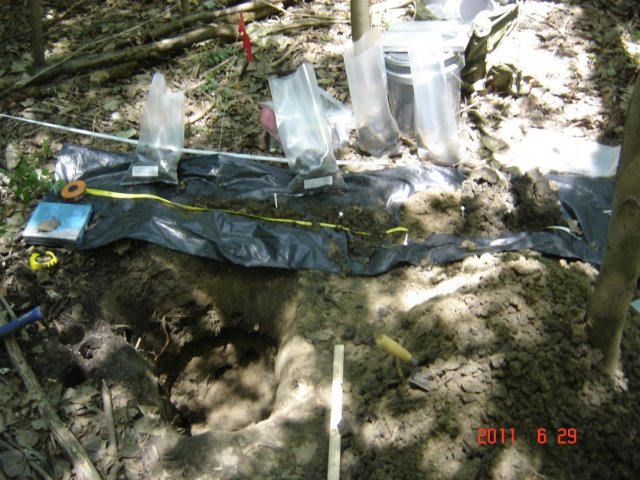Indicators: Soil Chemistry
What is soil chemistry?
Many chemical processes occur in soil due to metabolic activities of organisms living in the soil, water saturation, and interactions with the atmosphere and groundwater. Essential nutrients such as nitrogen and phosphorus are stored in the soil and are available for plants and microorganisms. Chemicals used by people, such as those found in fertilizers, are also absorbed into the soil. Analyzing soil chemistry can determine if nutrients are available at levels that can support ecosystem functions or at higher, toxic levels. It can also reveal if the soil is contaminated with a toxic chemical or heavy metal.
Why is it important to evaluate soil chemistry?

Soil chemistry is an important indicator of wetland ecological condition. Wetland soils act as sponges and are important in taking up phosphorus and removing nitrogen from water. Soil chemistry has been used to describe wetland ecological status and restoration progress. While wetland organisms need nutrients, excessive nutrients can also be toxic. Soils with high levels of certain nutrients, chemicals, and/or heavy metals are not able to support a high diversity of organisms.
What can soil chemistry tell us about the condition of water?
The chemical makeup of the soil can provide information on wetland condition, wetland water quality and services being provided by the wetland ecosystem (such as nutrient cycling and the ability to support vegetation and wildlife). Trace elements (e.g. cadmium, copper, lead and zinc) at elevated levels can be potential stressors and indicate pollution sources.
How is this indicator used in NARS?
The National Wetland Condition Assessment collect soil chemistry data which is available on the NARS data page. Below the table you access assessment information in current reports.
| NLA | NRSA | NCCA | NWCA | Indicator Type |
|---|---|---|---|---|
| X | Core Indicator | |||
| Research Indicator |
The National Wetland Condition Assessment Web Report - Soil Chemistry Data Available Soon
